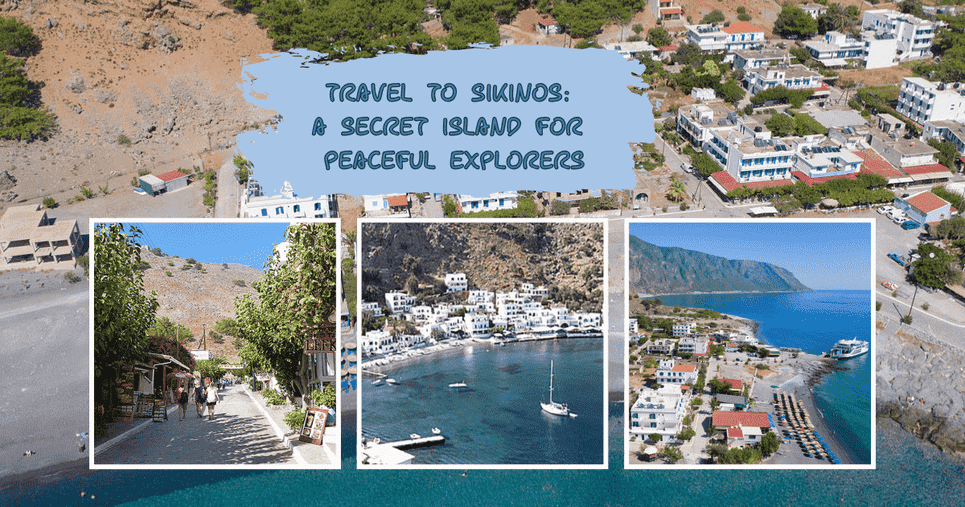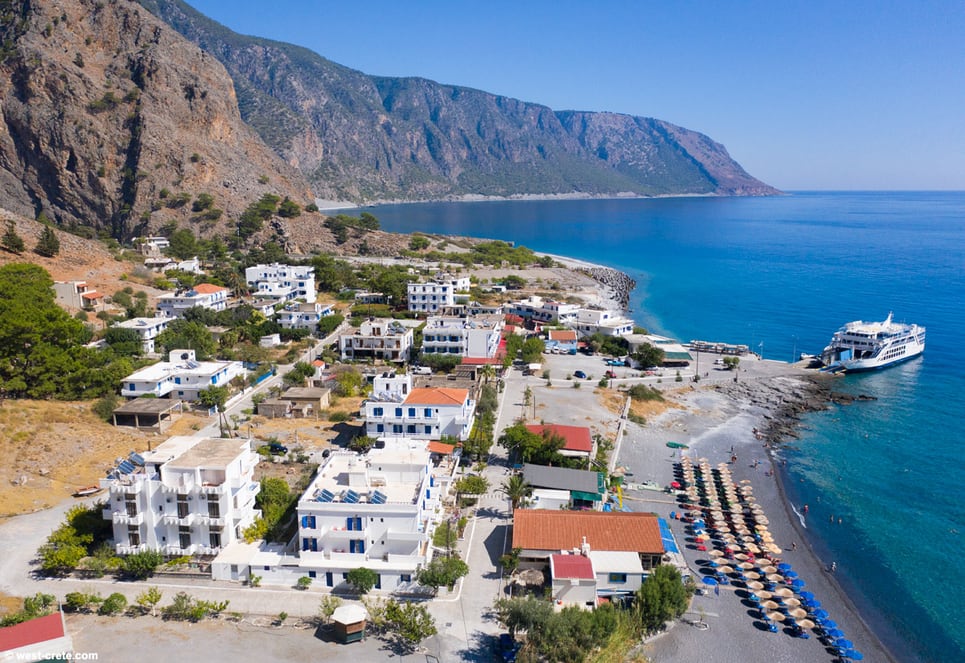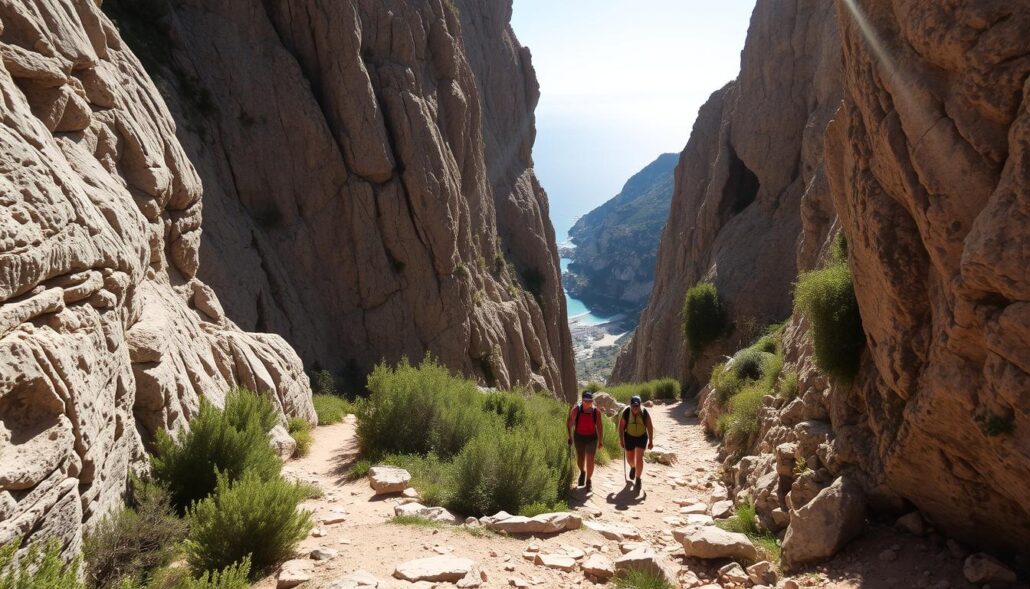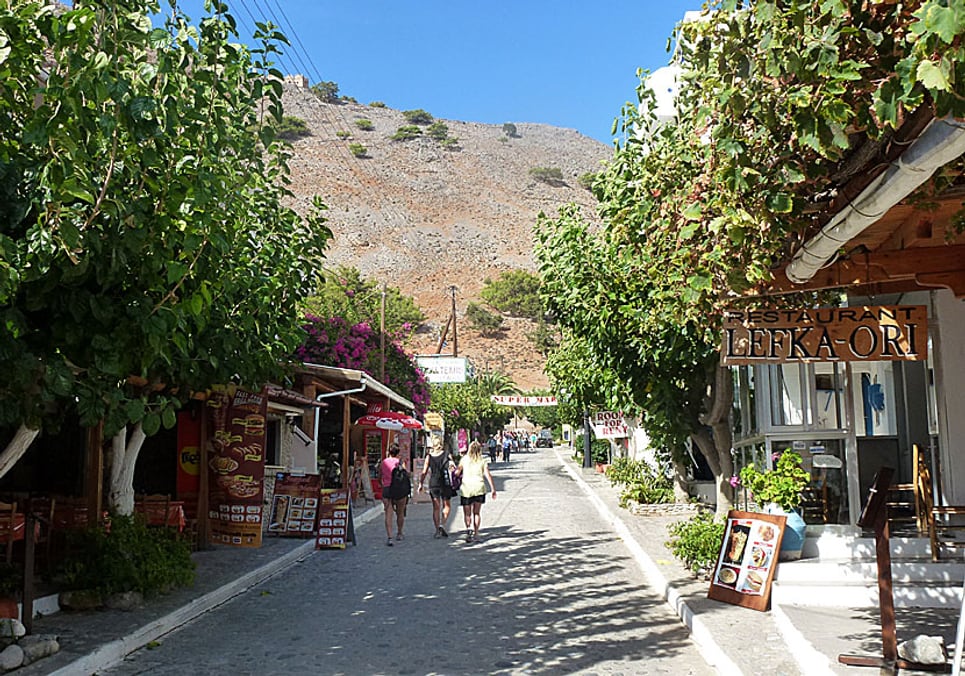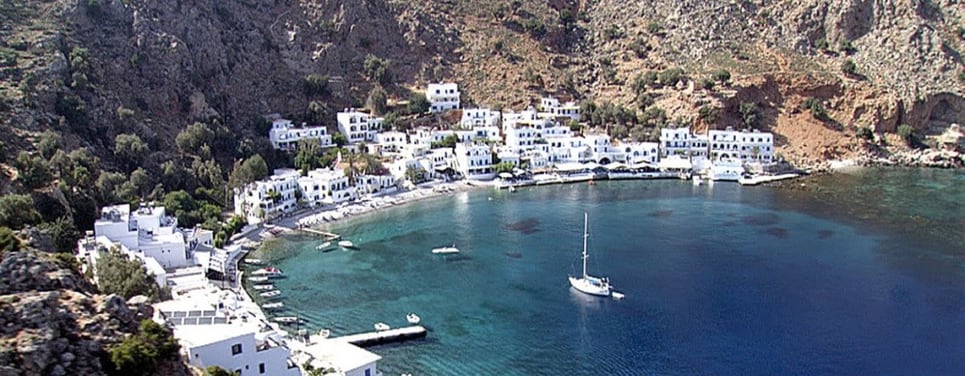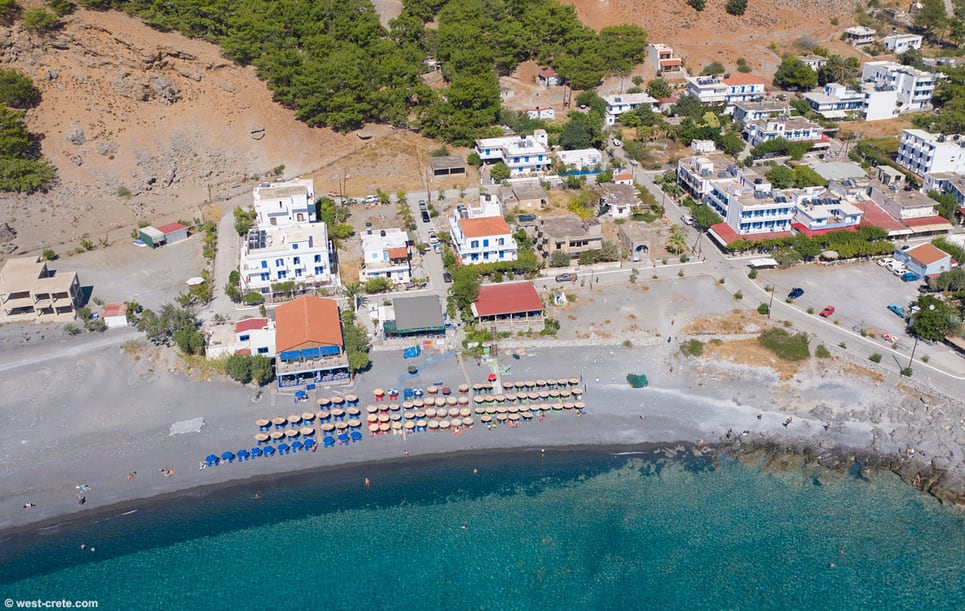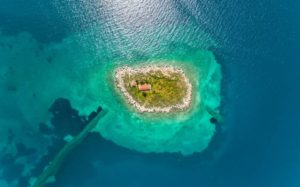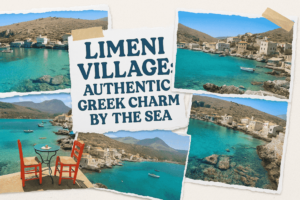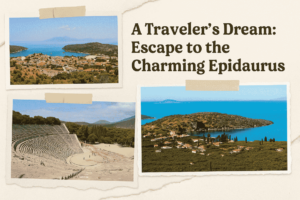Hiking to Agia Roumeli: Explore Crete’s Hidden Coastal Village
Tucked between rugged cliffs and the Libyan Sea, a remote settlement in southwest Crete offers an escape few travellers truly experience. This car-free haven serves as the southern exit of Samaria Gorge, welcoming weary walkers with crystal waters and authentic tavernas. While most visitors pause briefly for lunch before catching ferries east, those who linger uncover its quiet magic.
Accessible solely by boat or via mountain paths, the village preserves traditional Cretan rhythms. Mornings bring peaceful moments where locals share stories over thick Greek coffee. By afternoon, the harbour buzzes with adventurers fresh from Europe’s longest canyon. This daily rhythm creates two distinct faces – serene isolation and joyful camaraderie.
The community’s isolation has safeguarded its character. Whitewashed houses cling to slopes above pebbled shores, while family-run businesses showcase Crete’s famed filotimo spirit. Visitors often find themselves drawn to neighbouring coastal gems like Loutro, accessible via scenic ferry routes along the south coast.
Beyond its role as a hiking terminus, the area rewards explorers with hidden coves and ancient trails. Whether you arrive by sea or foot, prepare for landscapes where mountains plunge into turquoise waters – a spectacle that’s remained unchanged for centuries.
Discovering Agia Roumeli: A Coastal Retreat
Reaching this coastal sanctuary feels like uncovering a well-kept secret. With no road access, visitors choose between two adventures: a scenic ferry ride along Crete’s southern shores or a demanding hike through Europe’s longest gorge. This isolation preserves its unspoilt charm, where the Libyan Sea whispers against pebbled beaches and citrus trees scent the air.
Location and Accessibility
Daily ferries operated by ANENDYK connect the settlement to nearby towns from April to October. Boats arrive from Paleohora, Sougia, and Chora Sfakion – including stops at picturesque coastal gems. Winter brings limited services, reinforcing the area’s seasonal rhythm. Most travellers arrive by sea, though hardened trekkers emerge dusty but triumphant from Samaria Gorge’s southern exit.
The Unique Village Atmosphere and Local Filotimo
Mornings here unfold with fishermen mending nets and old men debating over kafeneío counters. Afternoons buzz with stories from exhilarated hikers. When the last ferry departs, quiet returns like a drawn curtain. Locals exemplify filotimo – a Greek code of honour – whether sharing homemade raki or sheltering stranded visitors during sudden storms.
Understanding Agia Roumeli History and Heritage
History whispers through every stone in this coastal enclave, where civilisations have left their mark across millennia. The site near ancient Tarrha reveals a bustling Hellenistic port that once connected Mediterranean trade routes. Merchant ships carried goods from Alexandria to Europe here, their legacy echoing in scattered pottery shards along nearby paths.
Historical Landmarks and Ancient Trade Routes
Venetian engineers later recognised the location’s strategic value, establishing shipyards in its sheltered bay. By the 1500s, maps bore the name Santa Rumeli – a nod to Ottoman influences that followed. Today, walkers stumble upon weathered mooring rings etched into cliffs, silent witnesses to centuries of maritime activity.
Byzantine and Ottoman Influences
The whitewashed chapel of Panagia honours the Virgin Mary, yet its foundations conceal older secrets. Built over a temple to Apollo, it symbolises layered spiritual traditions. A steep trail through forest leads to an 18th-century Ottoman fortress, its crumbling walls framing sea vistas once guarded by janissaries.
Near the village square, a marble plaque remembers six local men taken by Nazis in 1944. Their story, like the canyon’s resistance fighters before them, cements this site as a place where history’s shadows meet crystal-clear waters.
Hiking to Agia Roumeli: Practical Tips and Route Information
Choosing your path to this secluded village requires careful planning, with two distinct routes offering vastly different experiences. Whether you prefer dramatic gorges or coastal panoramas, proper preparation ensures you’ll savour every step.
Route Overview via Samaria Gorge
The classic Samaria Gorge hike remains Crete’s crown jewel. This 16-kilometre descent winds through ancient cypress forests and past rock formations towering 300 metres high. Most complete the trek in 5-7 hours, emerging at coastal trails near Agios Pavlos. Pack sturdy shoes – the river crossings and uneven terrain demand proper footwear. For detailed planning, consult our practical guide to hiking Samaria Gorge.
Exploring the Coastal E4 Trail
Adventurers seeking solitude often tackle the 20-kilometre E4 coastal path from Sougia. The route ascends past Byzantine ruins and the Prophet Elias chapel, where panoramic sea views reward steep climbs. After traversing Tripiti Gorge’s technical sections, Domata Beach’s turquoise waters offer respite before the final 550-metre ascent. Allow 8 hours minimum – this trail’s 3/10 difficulty rating underestimates its sun-exposed stretches.
From the village, shorter walks unfold along Crete’s wild south coast. The Agios Pavlos route reveals hidden chapels and quiet coves, while the Loutro trail serves gentle taverna lunches with Aegean vistas. Always carry extra water – these paths offer limited shade despite their beauty.
Planning Your Trip: Accommodations, Dining and Local Experiences
Finding the perfect base in this car-free coastal retreat transforms a simple stay into a cultural immersion. Family-run establishments dominate the hospitality scene, blending modern comforts with age-old Cretan traditions.
Where to Stay: Family-Run Hospitality
Hotel Calypso exemplifies Cretan filotimo with its sunlit rooms and balcony sea views. Owners often greet guests with homemade raki, sharing stories about local customs. Air-conditioned rooms feature fridges for cooling post-hike drinks, while reliable Wi-Fi lets adventurers share canyon photos over breakfast.
Savouring Authentic Cretan Flavours
The attached restaurant sources ingredients from its organic garden, serving dishes like honey-drizzled Sfakiani pita. Evening meals become cultural events – watch chefs stuff zucchini flowers while lyra music drifts through the terrace. Many visitors plan day trips to Agios Pavlos after sampling lentil soups that fuel coastal explorations.
When ferries depart, the village reveals its true charm. Hotel staff might arrange impromptu van tours to hidden beaches or help navigate weather delays. Whether enjoying golden-hour souvlaki or plotting journeys to Chora Sfakion, every moment here feels distinctly Cretan.
Essential Preparations: Gear, Weather and Safety Considerations
Smart preparation transforms challenging journeys into rewarding adventures. Coastal paths and sudden weather shifts demand thoughtful planning – your choices here determine whether you’ll reminisce about sunlit triumphs or stormy misadventures.
Choosing the Right Footwear and Hiking Equipment
Sturdy shoes prove non-negotiable on Crete’s rocky trails. Opt for ankle-supporting boots with grippy soles – you’ll thank yourself during river crossings and scree-covered descents. Pack lightweight layers, a head torch, and twice the water you think you’ll need. Remote stretches offer few chances to refill.
Monitoring Weather and Ferry Schedules
Check weather forecasts religiously – Libyan Sea squalls can ground ferries for days. Morning hikers often beat afternoon crowds, but always have backup plans. If services halt, friendly locals might suggest coastal walks or help arrange winter transport back to Chania.
Leave wiggle room in your itinerary. Delays become stories when spent swapping tales at beachside tavernas, raki in hand as waves reclaim the shore.

